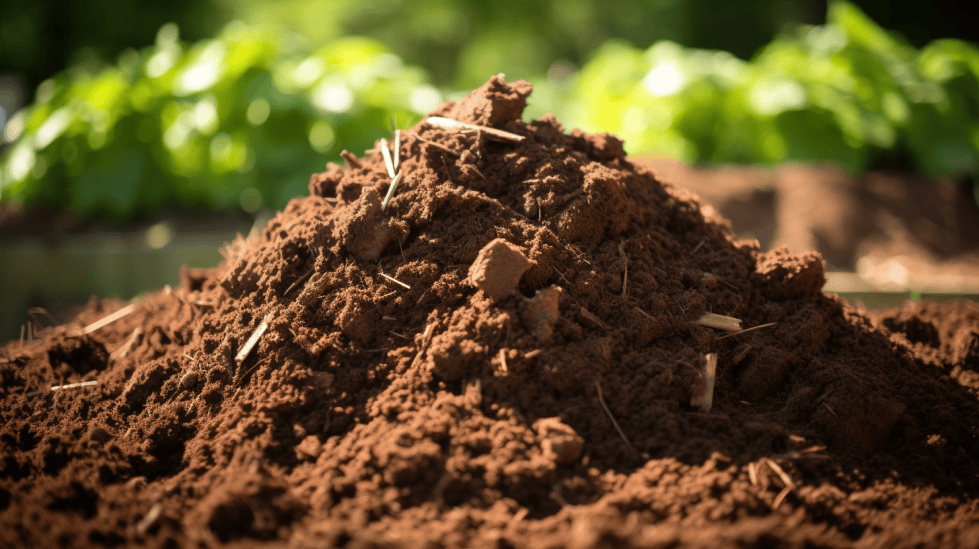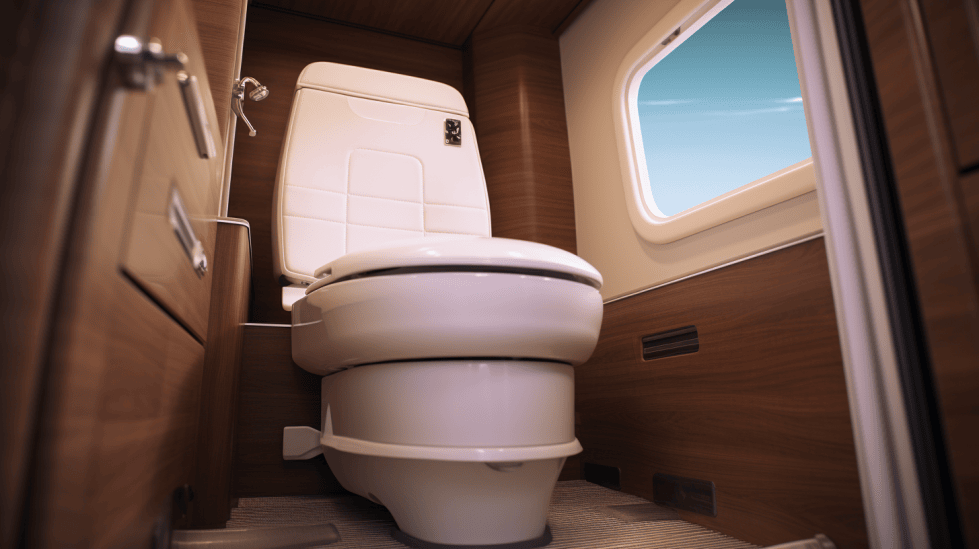How Does a Composting Toilet Work
Composting toilets are an innovative solution to addressing waste management challenges while minimizing environmental impact. These toilets offer an eco-friendly alternative to traditional flush toilets, as they do not rely on water and can help conserve valuable resources. By understanding how composting toilets work, we can better appreciate their benefits and applications in various settings.
At the heart of a composting toilet is the process of aerobic decomposition, which breaks down human waste into a nutrient-rich compost instead of flushing it away with water as traditional toilets do. To achieve optimal decomposition, these toilets create a favorable environment for aerobic bacteria, maintaining proper moisture levels, carbon-nitrogen balance, and temperature within the toilet system. As a result, composting toilets can effectively manage waste without producing harmful byproducts or contributing to water pollution.
Key Takeaways
- Composting toilets are eco-friendly alternatives to traditional flush toilets that use aerobic decomposition to break down human waste.
- Creating the right environment for aerobic bacteria is crucial for the efficiency of composting toilets.
- Composting toilets help conserve water resources and reduce pollution while providing an effective solution for waste management.
Understanding Composting Toilets
What is a Composting Toilet?
A composting toilet is a type of toilet that converts human waste into compost instead of flushing it away with water. I find them to be a more environmentally friendly option as they require no water and significantly reduce the amount of waste that enters sewage systems. By creating an oxygen-rich environment, aerobic bacteria can break down the waste effectively, making it safe and clean. To understand how composting toilets work, it’s essential to know two main components: the compost chamber and the aeration unit, which is also known as the evaporation chamber1.
The compost chamber is directly connected to the base of the toilet and collects the waste. It’s here that the decomposition process begins, with waste and compost mixture combining together1. The aeration unit, on the other hand, aids in evaporating excess liquid, which is essential for the composting process.
Different Types of Composting Toilets
There are two main types of compostable toilets: self-contained compost toilets and central compost toilet systems. Both serve the same purpose but come with different features, and I will briefly describe each.
Self-contained compost toilets are standalone units, where both the toilet and the composting chamber are housed within the same unit. They are ideal for small spaces, like tiny homes or RVs. One of the advantages of self-contained compost toilets is that they are easier to install and maintain, as the entire system is contained in a single unit.
Central compost toilet systems are more complex, with the composting system located separately from the toilet itself. This can be advantageous for larger households or commercial settings, as the central system can handle waste from multiple toilet units. The waste is transported from the toilets to the central system, where it undergoes decomposition and composting. These systems typically require a more intricate installation process and may need more maintenance than self-contained units.
In conclusion, composting toilets are an eco-friendly alternative to conventional toilets, as they save water and reduce the burden on sewage systems. Understanding these compostable toilets and choosing the right type for your needs can make a significant difference in your environmental impact.

Footnotes
How Composting Toilets Work
As someone who understands composting toilets, I can tell you that they are an alternative to traditional flush toilets and work by using aerobic bacteria to break down human waste into compost. A key advantage of composting toilets is they don’t require any water, making them an environmentally friendly option.
The Role of Aerobic Bacteria
Aerobic bacteria play a crucial role in the composting process. These microorganisms thrive in the presence of oxygen and break down organic materials, like human waste and added bulking materials such as wood chips, peat moss, or coconut coir. By decomposing the solid waste, these bacteria help eliminate pathogens, reduce the waste’s size, and transform it into nutrient-rich compost that can be used in soil amendment or landscaping.
The Stages of the Composting Process
There are three primary stages of the composting process that take place in a composting toilet:
- Stage 1 – Bulk Formation: During this stage, I would add organic materials like wood chips, peat moss, or coconut coir to the waste to help create air pockets and maintain a proper balance of carbon and nitrogen. These materials aid the aerobic bacteria and promote better decomposition.
- Stage 2 – Aerobic Decomposition: As mentioned earlier, aerobic bacteria break down the solid waste in the presence of oxygen. A good composting toilet design will ensure proper aeration and ventilation for these bacteria to work efficiently. The more efficiently they work, the less odor they produce.
- Stage 3 – Compost Maturation: After the aerobic decomposition, the resulting compost needs time to mature, so any remaining pathogens are destroyed. The time needed for maturation varies depending on factors like the type of composting toilet, temperature, and moisture content. Once the compost matures, it can be safely removed and used for various purposes.
In conclusion, composting toilets work by utilizing aerobic bacteria to break down human waste, along with added organic materials like wood chips, peat moss, or coconut coir, into compost. The process involves three main stages, and the benefits include water conservation, environmentally friendly waste management, and odor-free operation.

Components and Design of Composting Toilets
Composting Chamber
The composting chamber is the heart of a composting toilet, where human waste is collected and converted into compost. In this part of the system, aerobic bacteria decompose the waste as it is directly connected to the base/seat of the toilet. To create an optimal environment for these bacteria, it’s crucial to maintain a balance of oxygen levels, moisture content, and heat. I make sure to monitor these factors regularly and adjust as necessary to support the composting process.
Ventilation System
A key component of composting toilets is the ventilation system, which is responsible for regulating the airflow and odors inside the composting chamber. From my experience, it’s important to ensure there is adequate ventilation to maintain oxygen levels required for aerobic decomposition, as well as to remove excess moisture and prevent the buildup of unpleasant odors. Some composting toilets come with a fan or aeration units to enhance air circulation, and I find that they help significantly in maintaining a healthy composting environment.
Separate Containers
One notable feature of many composting toilets is the use of separate containers for liquid and solid waste. This separation is designed to make maintenance easier and improve the efficiency of the composting process. By keeping these waste products separate, I’ve noticed that it helps to control moisture levels in the composting chamber, minimizing the risk of creating a soggy and anaerobic environment. In addition, when it’s time to empty these containers, it’s a much more manageable task, since the waste is already separated. Finally, having separate containers for liquids and solids allows for more targeted treatment, such as adding bulking agents to solid waste to optimize the composting process.
Managing Waste with Composting Toilets
As someone who has experience with composting toilets, I can confidently share how these systems help in managing waste more sustainably. In this section, we’ll specifically discuss how to deal with liquid waste and whether toilet paper can be composted.
How to deal with Liquid Waste
One of the essential steps in managing waste with composting toilets is dealing with liquid waste. Unlike traditional flush toilets, composting toilets don’t require water for flushing. Instead, they are designed to separate liquid waste from solid waste. It is crucial because excess liquid could make the compost pile too wet, which may slow down the decomposition process and create unwanted odors.
To manage liquid waste effectively, composting toilets come with separate tanks or containers designated for this purpose. In some units, the liquid waste is directed to an evaporation chamber of the toilet, which helps with reducing the waste volume. Additionally, the collected liquid waste can be safely and responsibly disposed of according to local guidelines and requirements. Remember to always follow your area’s regulations when disposing of liquid waste.
Toilet Paper: Can it be Composted?
When it comes to toilet paper, most types can be composted along with the solid waste in a composting toilet. Biodegradable and environmentally-friendly toilet paper brands are the best choices, as they break down more quickly, which aids the decomposition process.
However, it’s essential to be cautious of toilet paper usage. Excessive amounts can affect the proper balance of carbon-to-nitrogen ratio in the compost heap. By using an appropriate amount of toilet paper, the decomposition process will be more efficient and odor-free.
In conclusion, composting toilets offer an environmentally sustainable option for managing waste. Dealing with liquid waste and proper toilet paper usage are crucial aspects of using composting toilets effectively. By following these guidelines, you can enjoy the benefits of this eco-friendly system and contribute to a cleaner environment.
Composting Toilets vs Traditional Toilets
Water Usage
When comparing composting toilets and traditional flush toilets, it’s important to consider water usage. Flush toilets, particularly older models, use a significant amount of water, with some consuming up to 5-7 gallons per flush. Composting toilets, on the other hand, are dry systems that don’t use water for flushing. This reduction in water usage is a major advantage I see in using composting toilets, especially in areas with limited water resources.
Environmental Impact
In terms of environmental impact, composting toilets have a lesser overall impact compared to traditional flush toilets. The waste from composting toilets is broken down into an oxygen-rich environment, allowing aerobic bacteria to decompose the waste, which can ultimately be used as fertilizer. This composting process reduces the need for complex sewage systems or treatment facilities. Regular toilets, by contrast, contribute to the stress on sewerage infrastructure and the potential for pollution of water sources.
Health Hazards
Lastly, let’s examine the potential health hazards associated with composting and traditional toilets. Flush toilets, when properly connected to sewerage systems, pose minimal health risks. However, the sewage treatment process can be energy-intensive and has the potential to release toxins during its operation.
Composting toilets, while providing a more eco-friendly alternative, have some health concerns. If not properly maintained, they can produce unpleasant odors and attract insects. Furthermore, the compost must be handled with care to avoid contact with pathogens. Despite these concerns, I believe that with proper maintenance and responsible usage, composting toilets can be a safe and environmentally friendly option.

Applications of Composting Toilets
Composting toilets have gained popularity in various settings due to their environmental benefits, low maintenance, and water-saving capabilities. In this section, I will discuss their applications in tiny homes, rural areas, and national parks.
Tiny Homes
In the tiny house community, composting toilets are a popular choice because of their compact size and waterless operation. They fit seamlessly into limited bathroom spaces and don’t require any connection to a sewer system. Furthermore, composting toilets reduce water usage, which is crucial in tiny homes where conservation of resources is essential. As a result, homeowners in small living spaces can maintain an eco-friendly lifestyle without compromising on functionality or hygiene.
Rural Areas
Composting toilets are a valuable option for people living in rural areas, where access to public sewage systems and water resources might be limited. These toilets can operate independently, making them an ideal choice for remote locations with few utilities. In addition to reducing the need for water infrastructure, composting toilets taking advantage of the natural biodegradation process contribute positively to the environment by turning waste into a nutrient-rich compost for agricultural use in these rural areas.
National Parks
National parks often face the challenge of providing adequate sanitation facilities while preserving the natural environment. Installing traditional flush toilets may pose challenges due to water access and the desire to minimize ecological impact. Composting toilets offer a solution for maintaining cleanliness and managing waste in national parks without consuming significant water resources or disrupting the environment. These facilities provide a suitable way to accommodate visitors’ needs and support park staff with minimal ecological impact, preserving the precious natural habitats found within these areas.
Choosing the Right Composting Toilet
The Best Composting Toilets
In my search for the best composting toilets, I came across a few top contenders. One brand that stands out is Sun-Mar toilets. Sun-Mar offers a wide range of composting toilets to suit various needs and preferences. They have both self-contained and centralized systems to accommodate different types of living spaces. Additionally, their toilets are known for being environmentally friendly, easy to maintain, and efficient in breaking down waste.
Another option to consider is the Nature’s Head Self-Contained Composting Toilet. This popular choice is compact and easy to use, making it ideal for smaller spaces or off-grid living situations. Its urine-diverting system and vent system help with odor control, and the compact design saves space.
What to Consider When Buying
When deciding on the best composting toilet for your needs, several factors come into play. Here are some key aspects I kept in mind:
- Size and space requirements: It is crucial to consider the size of the toilet and the space you have available. Some toilets might be too large for a tiny bathroom, so ensure there is enough room for the unit and its maintenance, such as emptying containers or accessing the compost.
- Type of system: As mentioned earlier, there are two main types of composting toilets: self-contained and centralized systems. A self-contained system has the composting unit connected directly to the toilet, while a centralized system involves a separate composting chamber often located below the bathroom. Choose the one that best suits your living situation and installation preferences.
- Capacity: The capacity of a composting toilet should meet your household’s needs. This depends on the number of users and the frequency of use. Most composting toilet models indicate their capacity, such as the number of people they can accommodate for residential or seasonal use.
- Ease of maintenance: A composting toilet requires regular maintenance to ensure proper functioning and hygiene. Consider how easy it is to empty the solid and liquid waste containers, as well as how often the toilet needs maintenance.
- Price: Finally, the cost of the composting toilet might be a determining factor. There are models available at various price points, so think about investing in the best option within your budget.
In conclusion, finding the best composting toilet involves carefully considering your specific needs and preferences. By taking factors such as size, type of system, capacity, maintenance, and price into account, you can make an informed decision and choose the right composting toilet for your home.
Final Thoughts
As someone who has researched composting toilets, I can confidently say that these systems offer an eco-friendly alternative to traditional toilets. They operate by converting human waste into compost, a nutrient-rich substance beneficial to plants. The process involves bacteria, fungi, and other microorganisms that break down the waste, and it usually takes place in a compost chamber within the toilet system.
One of the main advantages of composting toilets is that they use little to no water, which makes them an excellent option for locations with limited water access. They also significantly reduce the amount of waste sent to water treatment facilities, lowering our collective environmental impact.
However, it is essential to properly maintain a composting toilet system to ensure its efficiency. This means regularly emptying the compost chamber and, if needed, managing the evaporation chamber. Also, it’s crucial to manage odors and ensure proper decomposition with the right balance of carbon and nitrogen materials.
In my experience, composting toilets can be an excellent solution for remote locations and even urban settings where water conservation is a priority. By understanding their operation and implementing them effectively, we can make strides toward sustainable living and reducing our environmental footprint.
Frequently Asked Questions
What is the process behind compost toilet waste decomposition?
The process behind compost toilet waste decomposition involves aerobic decomposition, which breaks down human waste without flushing it away in watery sewage. In a composting toilet, the waste is stored, and someone has to regularly turn or spin it to help the composting process along source.
How often should a composting toilet be emptied?
The frequency of emptying a composting toilet depends on various factors, including the number of users and the specific model. On average, a composting toilet may need to be emptied every 3-6 months for a full-time usage.
What are the maintenance requirements for RV composting toilets?
Maintenance for RV composting toilets typically involves regularly stirring or turning the waste to facilitate the composting process. Additionally, it may be necessary to add bulking material such as coconut coir or wood shavings to improve the balance of carbon and nitrogen and keep unpleasant odors at bay. Finally, regular cleaning of the bowl and urine diversion system is also important for proper functioning.
Are there any drawbacks to using a composting toilet system?
There can be some drawbacks to using a composting toilet system. One of the common issues is the potential for unpleasant odors if the system is not properly balanced or maintained. Another drawback is the need for manual handling and disposal of waste, which some people may find unappealing. Additionally, certain local regulations may restrict the use of composting toilets, so it is essential to check local guidelines before installing one.
What are the key differences between various composting toilet brands?
Different composting toilet brands may offer varying features and designs, such as self-contained units versus remote chambers, electricity requirements, ease of installation, waste disposal methods, and overall size. It’s essential to research various brands and models to find the most suitable option for your specific needs and preferences.
How can I build a DIY composting toilet?
Building a DIY composting toilet can be a cost-effective and eco-friendly alternative to purchasing a commercial system. The process typically involves using a sturdy container, constructing a suitable seat, and adding ventilation and a urine diversion system if needed. Moreover, you will need to select appropriate composting materials, such as wood shavings or coconut coir, to facilitate the decomposition process. There are numerous online resources and tutorials available to guide you through the construction of a DIY composting toilet.








